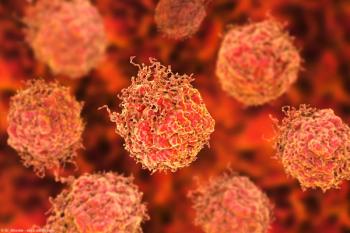
Genetics could explain chronic pelvic pain
Baltimore?What causes chronic pain in chronic prostatitis/chronic pelvic pain syndrome (CP/CPPS)? This could be the wrong question to ask, said Jeffrey S. Mogil, PhD, at the NIDDK-sponsored Chronic Pelvic Pain/Chronic Prostatitis Scientific Workshop. The better question may be: Why do these particular men have chronic pain, whereas others do not?
Baltimore-What causes chronic pain in chronic prostatitis/chronic pelvic pain syndrome (CP/CPPS)? This could be the wrong question to ask, said Jeffrey S. Mogil, PhD, at the NIDDK-sponsored Chronic Pelvic Pain/Chronic Prostatitis Scientific Workshop. The better question may be: Why do these particular men have chronic pain, whereas others do not?
"The answer could be either something about the insult, something about the patient, or some interaction between the two. I submit that finding out the answer would be very, very useful in helping us understand chronic pain," said Dr. Mogil, E.P. Taylor Professor of Pain Studies at McGill University in Montreal.
He has been researching the genetic basis of individual pain responses mainly in mouse models, but he argues that many of those same genes may be responsible for the variation in human responses, as well. In fact, he and his team have found one already-the gene for red hair.
"They're falling like dominoes ever since the discovery of the [human] gene for hereditary sensory neuropathy type 4, or congenital insensitivity to pain," Dr. Mogil remarked.
But it turns out those diseases only occur in a small number of people.
Most aspects of pain sensitivity are likely controlled by multiple genes interacting with environmental factors, and those genes are much harder to tease out, he said. Association studies, which look for differences in allelic frequencies between cases and controls, are helpful, but researchers have to know what gene might be relevant first and to have found relevant polymorphisms.
Linkage analyses, on the other hand, do look through the whole genome, but they are most productive in populations with a high prevalence of the pain trait, and they point to candidate regions on chromosomes first, not individual genes. These kinds of studies, however, have pointed some genetic researchers to general locations of genes that may be responsible for IC (see "Researchers home in on interstitial cystitis genes," Urology Times, Aug. 15, 2005, page 24).
In mice, these kinds of linkage analyses can be done in conjunction with breeding experiments. Different mouse strains can vary extremely widely in their response to pain assays, so investigators cross two strains, one with the trait of interest, and conduct similar locus mapping in the F2 hybrids in studies called quantitative locus (QTL) mapping. With these studies, researchers have located regions on the mouse genome that contain genes responsible for very specific types of pain sensitivity, such as thermal nociception. Interestingly, in some of these cases, the gene or genes are entirely sex specific.
Pinpointing gene locations
Likely candidate genes, however, may still not be the ones responsible for a pain trait. To find a specific gene responsible with surety, positional cloning is required. In these types of studies, congenic strains are created by backcrossing a strain with the marker of interest with a strain in which its expression is low so that, ultimately, a generation far downstream has little genetic material that differs from the donor except at the location of interest. If the remaining mice differ significantly from the "wild" type in the characteristic, the researchers have indeed narrowed down the location of the gene.
Newsletter
Stay current with the latest urology news and practice-changing insights — sign up now for the essential updates every urologist needs.


















